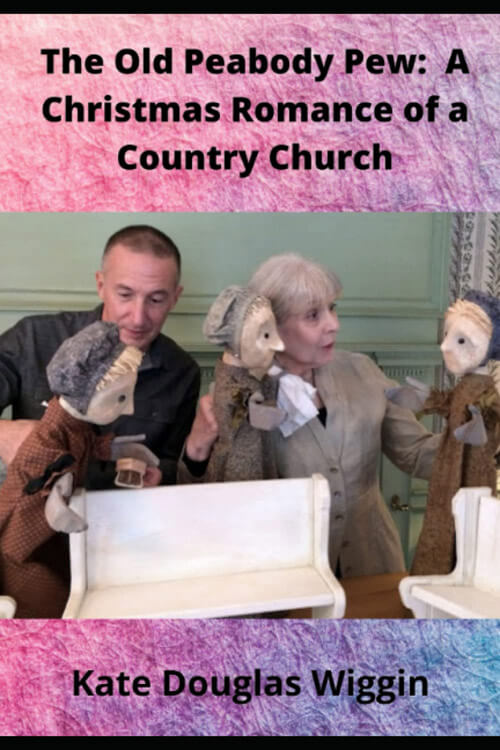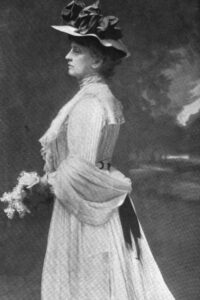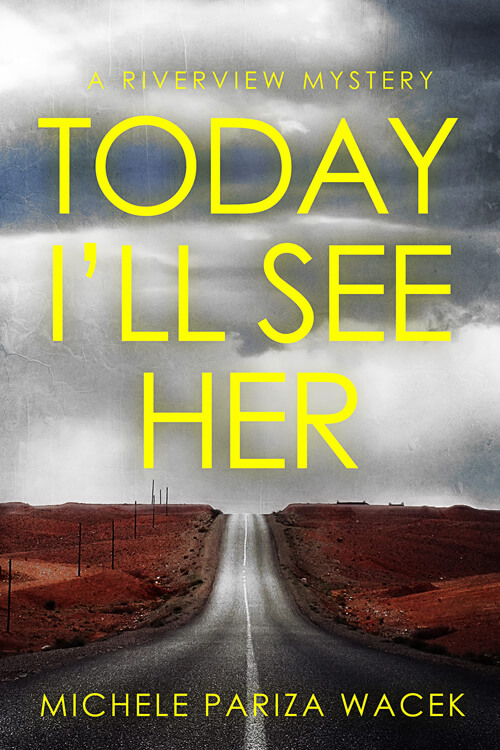
The Old Peabody Pew, A Christmas Romance of a Country Church
Like all other villages along the banks of the Saco, Edgewood is full of sunny slopes and leafy hollows. There are little, rounded, green-clad hillocks that might, like their scriptural sisters, “skip with joy,” and there are grand, rocky hills tufted with gaunt pine trees—these leading the eye to the splendid heights of a neighboring State, where snow-crowned peaks tower in the blue distance, sweeping the horizon in a long line of majesty.
Tory Hill holds its own among the others for peaceful beauty and fair prospect, and on its broad, level summit sits the white-painted Orthodox Meeting House. This faces a grassy common where six roads meet as if the early settlers had determined that no one should lack salvation because of a difficulty in reaching its visible source.
The old church has had a dignified and fruitful past, dating from that day in 1761 when young Paul Coffin received his call to preach at a stipend of fifty pounds sterling a year; answering “that never having heard of any Uneasiness among the people about his Doctrine or manner of life, he declared himself pleased to Settle as Soon as might be Judged Convenient.”
But that was a hundred and fifty years ago, and much has happened since those simple, strenuous old days. The chastening hand of time has been laid somewhat heavily on the town as well as on the church. Some of her sons have marched to the wars and died on the field of honor; some, seeking better fortunes, have gone westward; others, wearying of village life, the rocky soil, and rigors of farm work, have become entangled in the noise and competition, the rush and strife, of cities. When the sexton rings the bell nowadays, on a Sunday morning, it seems to have lost some of its old-time militant strength, something of its hope and courage; but it still rings, and although the Davids and Solomons, the Matthews, Marks, and Pauls of former congregations have left few descendants to perpetuate their labors, it will go on ringing as long as there is a Tabitha, a Dorcas, a Lois, or a Eunice left in the community.
This sentiment had been maintained for a quarter of a century, but it was now especially strong, as the old Tory Hill Meeting House had been undergoing for several years more or less extensive repairs.
Read or download Book
Kate Douglas Wiggin
Kate Douglas Wiggin (September 28, 1856 – August 24, 1923) was an American educator, author and composer.
Biography.
She wrote children’s stories, most notably the classic children’s novel Rebecca of Sunnybrook Farm, and composed collections of children’s songs. She started the first free kindergarten in San Francisco in 1878 (the Silver Street Free Kindergarten). With her sister during the 1880s, she also established a training school for kindergarten teachers. Kate Wiggin devoted her adult life to the welfare of children in an era when children were commonly thought of as cheap labor.
Wiggin went to California to study kindergarten methods. She began to teach in San Francisco with her sister Nora assisting her, and the two were instrumental in the establishment of over 60 kindergartens for the poor in San Francisco and Oakland. She moved from California to New York, and having no kindergarten work on hand, devoted herself to literature. She sent The Story of Patsy and The Bird’s Christmas Carol to Houghton, Mifflin & Co. who accepted them at once. Besides their talent for story-telling, she was a musician, sang well, and composed settings for her poems. She was also an excellent elocutionist. Her first literary work was Half a Dozen Housekeepers, a serial story that she sent to St. Nicholas. After the death of her husband in 1889, she returned to California to resume her kindergarten work, serving as the head of a Kindergarten Normal School. Some of her other works included Cathedral Courtship, A Summer in a Canon, Timothy’s Quest, The Story Hour, Kindergarten Chimes, Polly Oliver’s Problem, and Children’s Rights.
Early career
In 1873, hoping to ease Albion Bradbury’s lung disease, Kate’s family moved to Santa Barbara, California, where Kate’s stepfather died three years later. A kindergarten training class was opening in Los Angeles under Emma Marwedel (1818–1893), and Kate enrolled. After graduation, in 1878, she headed the first free kindergarten in California, on Silver Street in the slums of San Francisco. The children were “street Arabs of the wildest type”, but Kate had a loving personality and dramatic flair. By 1880 she was forming a teacher-training school in conjunction with the Silver Street kindergarten.
In 1881, Kate married (Samuel) Bradley Wiggin, a San Francisco lawyer. According to the customs of the time, she was required to resign from her teaching job. Still devoted to her school, she began to raise money for it through writing, first The Story of Patsy (1883), then The Birds’ Christmas Carol (1887). Both privately printed books were issued commercially by Houghton Mifflin in 1889, with enormous success.
Kate Wiggin had no children. She moved to New York City in 1888. When her husband died suddenly in 1889, Kate relocated to Maine. For the rest of her life, she grieved, but she also traveled as frequently as she could, dividing her time between writing, visits to Europe, and giving public reading for the benefit of various children’s charities.
Wiggin traveled abroad and back from Liverpool in the United Kingdom at least three times. Records from the Ellis Island logs show that she arrived back in New York City from Liverpool in October 1892, July 1893, and July 1894. On the logs for the 1892 trip, Wiggin describes her occupation as “Wife”, despite her former husband dying three years prior. In 1893 and 1894, she describes herself as an “Authoress”.
Wiggin met dry goods (specifically, linen) importer George Christopher Riggs on her way to England in 1894. The pair are said to have hit it off and had agreed to marry even before the ship docked in England. In the Ellis Island logs from Wiggin’s 1894 trip back to New York City from Liverpool, the two sign their names next to each other, indicating their closeness. The pair married in New York City on March 30, 1895, at All Souls Church. George Riggs soon became one of Wiggin’s biggest advocates as she became more successful.






